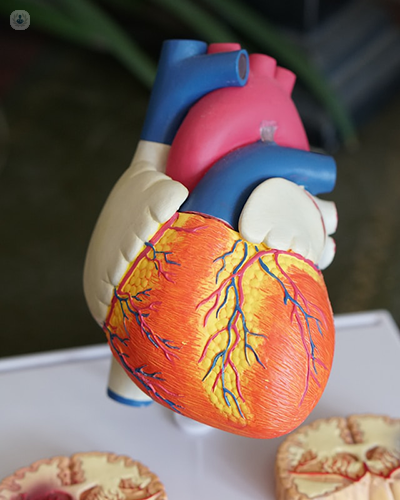Ask an expert: Coronary angioplasty FAQs
Autore:Coronary angioplasty, also known as percutaneous coronary intervention (PCI), is a procedure frequently used to treat atherosclerosis, a hardening and narrowing of the heart’s arteries, which can lead to serious complications. In this informative article, revered consultant cardiologist Dr Osama Alsanjari shares his expert insight on how coronary angioplasty procedures are performed and what patients can expect from the recovery period to follow.

What is a coronary angioplasty?
Coronary angioplasty is a procedure used to open clogged heart arteries. It uses a tiny balloon catheter that is inserted in to a blocked blood vessel to help widen it and improve blood flow to the heart.
Angioplasty is often combined with the placement of a small wire mesh tube, called a stent, into the artery. The stent helps prop the artery open and decreases the chance of it narrowing again.
When is a coronary angioplasty required?
Coronary angioplasty is performed when a narrowed artery puts the heart at risk due to the lack of blood supply.
The procedure can relieve the symptoms of angina or restore blood flow after a heart attack. People with blockages in their heart arteries may need angioplasty if they are having lots of discomfort in their chest, or if their blockages put them at risk of a heart attack or other serious complications.
How long does it take to perform?
The procedure is performed under local anaesthesia and usually takes about an hour or two. It can be done as an outpatient procedure or may require an overnight stay in the hospital. After the angioplasty has been completed, you will be monitored for several hours to make sure that there are no complications.
How safe is it?
The risk of major complications during an angioplasty is usually less than one percent. Some of the risks associated with coronary angioplasty include bleeding, clotting, or bruising at the point of insertion and scar tissue or blood clots forming in the stent.
It's common to have bleeding or bruising under the skin where the catheter was inserted. In very rare cases, angioplasty and stenting complications can include heart attack or stroke.
What is the recovery period like following a coronary angioplasty?
After having a planned (non-emergency) coronary angioplasty, you will usually be able to leave hospital the same day or following day but you will first spend some time in a recovery area immediately after your procedure.
Before you leave hospital, you will be given advice on any medication you need to take, diet and lifestyle guidance and wound care and hygiene advice to ensure you make a good recovery.
If you would like to schedule a consultation with Dr Alsanjari, you can do so by visiting his Top Doctors profile.


